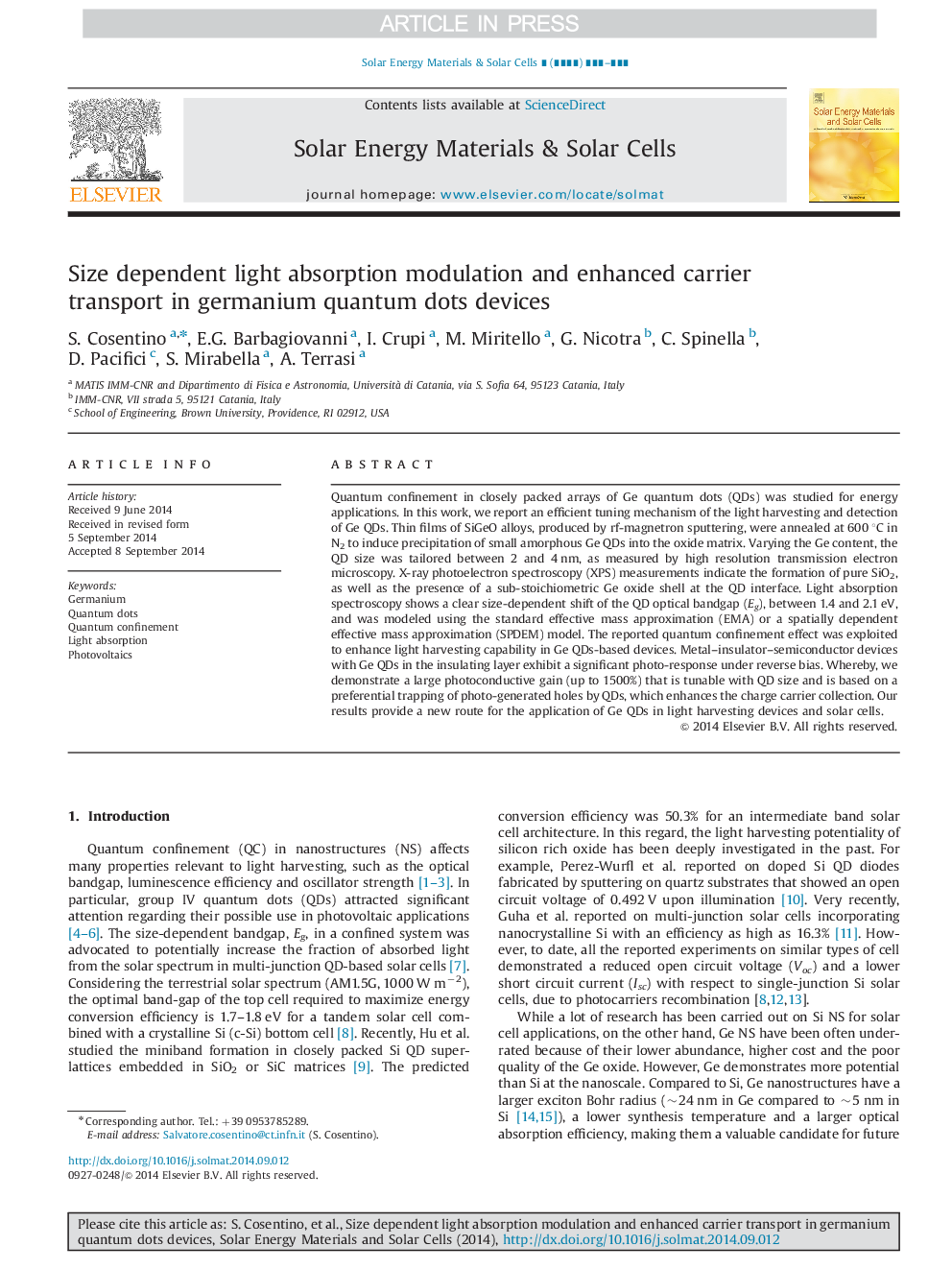| Article ID | Journal | Published Year | Pages | File Type |
|---|---|---|---|---|
| 6535237 | Solar Energy Materials and Solar Cells | 2015 | 7 Pages |
Abstract
Quantum confinement in closely packed arrays of Ge quantum dots (QDs) was studied for energy applications. In this work, we report an efficient tuning mechanism of the light harvesting and detection of Ge QDs. Thin films of SiGeO alloys, produced by rf-magnetron sputtering, were annealed at 600 °C in N2 to induce precipitation of small amorphous Ge QDs into the oxide matrix. Varying the Ge content, the QD size was tailored between 2 and 4 nm, as measured by high resolution transmission electron microscopy. X-ray photoelectron spectroscopy (XPS) measurements indicate the formation of pure SiO2, as well as the presence of a sub-stoichiometric Ge oxide shell at the QD interface. Light absorption spectroscopy shows a clear size-dependent shift of the QD optical bandgap (Eg), between 1.4 and 2.1 eV, and was modeled using the standard effective mass approximation (EMA) or a spatially dependent effective mass approximation (SPDEM) model. The reported quantum confinement effect was exploited to enhance light harvesting capability in Ge QDs-based devices. Metal-insulator-semiconductor devices with Ge QDs in the insulating layer exhibit a significant photo-response under reverse bias. Whereby, we demonstrate a large photoconductive gain (up to 1500%) that is tunable with QD size and is based on a preferential trapping of photo-generated holes by QDs, which enhances the charge carrier collection. Our results provide a new route for the application of Ge QDs in light harvesting devices and solar cells.
Related Topics
Physical Sciences and Engineering
Chemical Engineering
Catalysis
Authors
S. Cosentino, E.G. Barbagiovanni, I. Crupi, M. Miritello, G. Nicotra, C. Spinella, D. Pacifici, S. Mirabella, A. Terrasi,
